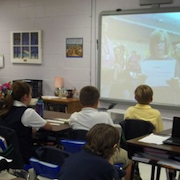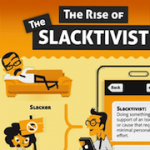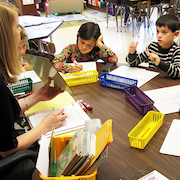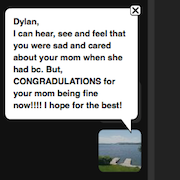It’s Connected Educators Month – the first major celebration ever of the powerful potential for educator-driven professional learning in the Internet age.
Each Wednesday of this month (five in all) we’re featuring several posts written by our Voices from the Learning Revolution bloggers. You can read our first collection here. This week, we’ve selected four more revolutionary voices from our collection of nearly 200 articles posted since March 2011. They, too, reflect the spirit and vision that underlay the USDOE-sponsored Online Communities of Practice project.
For regular updates about PLP’s involvement in CEM, be sure to visit the PLP blog.
Skype Adventures: Connected Learners in a Global Classroom
 Skype enables students to connect, collaborate, and communicate with students across the globe, says fourth grade teacher Patti Grayson. It creates an opportunity for students to learn from each other, to have authentic audiences for their work, and to meet musicians, authors, and others who can further their learning. “The possibilities are truly endless.” Skyping is no longer a novelty — a once-in-awhile special event. It’s becoming a routine part of being an effective 21st century teacher. Learn more
Skype enables students to connect, collaborate, and communicate with students across the globe, says fourth grade teacher Patti Grayson. It creates an opportunity for students to learn from each other, to have authentic audiences for their work, and to meet musicians, authors, and others who can further their learning. “The possibilities are truly endless.” Skyping is no longer a novelty — a once-in-awhile special event. It’s becoming a routine part of being an effective 21st century teacher. Learn more
Developing Our Students as Active Citizens
 The question, says high school American history teacher Margaret Haviland, is this: How do we translate our history students’ understanding of past actors into action by young people today? “We decided to chuck the traditional exam format and craft a project to help students make this connection and consider what it means to be an engaged citizen.” Haviland and her teaching partner invited students to pursue passionate interests as they drilled deep into the past and considered how to apply lessons learned in the present. Learn more
The question, says high school American history teacher Margaret Haviland, is this: How do we translate our history students’ understanding of past actors into action by young people today? “We decided to chuck the traditional exam format and craft a project to help students make this connection and consider what it means to be an engaged citizen.” Haviland and her teaching partner invited students to pursue passionate interests as they drilled deep into the past and considered how to apply lessons learned in the present. Learn more
What Do We Need Our Teachers to Be?
 What can administrators do to promote teacher learning on a daily basis? How, wonders elementary principal Lyn Hilt, can leaders structure school organizations to allow for collaboration and communication among peers and embed opportunities for both face-to-face and connected learning that’s informed by current research and best practices? Most of all, how will school leaders model for teachers “that we ourselves are growing professionally, and help the organization as a whole realize that complacency must be eradicated?” Learn more
What can administrators do to promote teacher learning on a daily basis? How, wonders elementary principal Lyn Hilt, can leaders structure school organizations to allow for collaboration and communication among peers and embed opportunities for both face-to-face and connected learning that’s informed by current research and best practices? Most of all, how will school leaders model for teachers “that we ourselves are growing professionally, and help the organization as a whole realize that complacency must be eradicated?” Learn more
Teaching Poetry the Connected Way
 In a connected poetry class, explains fifth grade teacher Rachel Small, students use Google Docs to write. “They use the GDocs sharing function to share their poem documents with me and some of their classmates (if they choose). I read their poems (from anywhere at anytime), give them one specific comment, and offer one constructive suggestion to improve their poem that I hope also adds to their poetry writing repertoire. Then we share in VoiceThread to a public audience.” Learn more
In a connected poetry class, explains fifth grade teacher Rachel Small, students use Google Docs to write. “They use the GDocs sharing function to share their poem documents with me and some of their classmates (if they choose). I read their poems (from anywhere at anytime), give them one specific comment, and offer one constructive suggestion to improve their poem that I hope also adds to their poetry writing repertoire. Then we share in VoiceThread to a public audience.” Learn more
John Norton
Latest posts by John Norton (see all)
- I'm a "Learner First" in a Whole New World - July 1, 2013
- Hale@home: Easing Student Transitions via Online Learning - May 17, 2013
- Our Top 13 Voices Posts for 2012! - January 1, 2013

